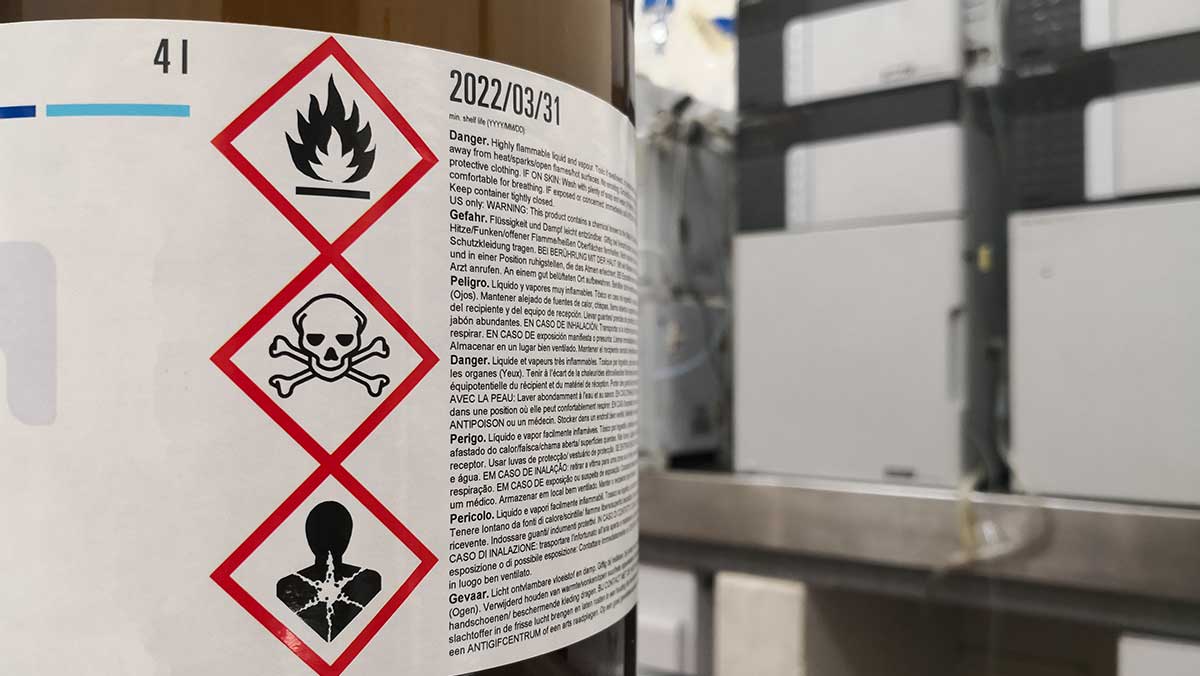It’s hard to imagine, but in the 1960s nearly 14,000 workers were killed on the job each year. From the end of WWII, and the industrial boom that followed, companies too often prioritized the importance of meeting production goals ahead of employee safety. This was especially true with chemicals. As injuries from chemical exposure mounted, so did the public outcry for regulations to protect workers which ultimately led to the passage of the OSH Act in 1971. OSHA, as it is commonly known today, sets out guidelines to help ensure worker safety. As you might expect, OSHA regulations have evolved over those 50 years and were incorporated into their Hazard Communication Standard with chemical labeling, shipping and handling at the forefront of those changes. But, what exactly are those regulations and how do you comply? Labels are one essential part of the process. Use these labeling best practices, GHS and OSHA, to ensure safe and healthful working conditions and meet compliance requirements.
What Is GHS and OSHA’s Hazard Communication Standard?
In 2003, the United Nations adopted the Globally Harmonized System of Classification and Labeling of Chemicals (GHS). This included criteria for classifying health, physical and environmental hazards and specifying information the labels and safety data sheets of hazardous chemicals should contain. In 2012, OSHA updated the Hazard Communication Standard to align with GHS and it’s now called HazCom 2012.
What Are GHS Labels?
GHS labels identify chemical hazards in the workplace. Designed to communicate specific warnings, they help workers understand proper handling and take the protective measures necessary to guide safe use.
United Ad Label stocks the labels you need for GHS labels applications.
What Are GHS Labeling Requirements?
Labeling primary and secondary containers of hazardous chemicals in the workplace is one requirement of HazCom. Each label should contain the following elements:
- Signal Word - indicates the severity of the chemical hazards. There are only two signal words, Danger and Warning. Danger is used for more severe hazards.
- Product Identifiers - most often the common product or chemical name.
- GHS Pictogram - The HazCom standards define the following pictograms to alert users of chemical hazards:
- Health Hazard - this includes chemicals with carcinogens, mutagenicities, reproductive toxicities, respiratory sensitizers, target organ toxicities and aspiration toxicities.
- Flame - flammables, chemicals that ignite when exposed to oxygen, organic peroxides that react when exposed to certain temperatures, those that emit flammable gas, and self-heating and self-reactive chemicals should use this pictogram.
- Exclamation Mark - this symbol signifies certain health effects including skin, eye and respiratory irritation, narcotic effects and acute toxicity.
- Gas Cylinder - this symbol is specific to gas under pressure.
- Corrosion - these chemicals can cause skin corrosion and burns, eye damage and can be corrosive to metals.
- Exploding Bomb - explosives, self-reactives and organic peroxides are all included in this category.
- Flame Over Circle - this pictogram incorporates oxidizers. Although they aren’t necessarily combustible they can cause other chemicals to ignite more readily.
- Severe Toxic - for chemicals with acute toxicity which could be potentially fatal.
- Hazard Statements - these short and to-the-point statements describe the nature of the hazard, including the physical, health, and environmental dangers of the chemical.
- Precautionary Statements - are the recommended measures to take to minimize or prevent adverse effects resulting from exposure to the hazardous chemical or improper storage or handling of the chemical. One example: wear eye protection.
- Manufacturers Information - identifies the manufacturer's company name and contact information.
GHS Labeling for Primary and Secondary Containers
GHS requires the labeling of both primary and secondary containers. To distinguish, a primary container is used to transport chemicals from the manufacturer, often a drum, barrel, cylinder or bottle. A secondary container including a jar, jug or spray bottle, contains chemicals that have been transferred from their primary source.
GHS Labels for Primary Containers
As detailed above, GHS labels for a primary container are required to contain a signal word, product identifier, pictograms, hazard and precautionary statements and supplier identification information. Plus, removal of this label is prohibited. If it gets obscured or damaged, a replacement label containing the same information must be applied in its place.
GHS Labels for Secondary Containers
GHS labeling for secondary container requirements is slightly less extensive. At minimum, a label must include the full name of the chemical, the hazard, the date transferred and the expiration date unless these conditions are met: The material is used within the same work shift as the person who made the transfer from primary to secondary container The person who oversaw the transfer remains in the work area The secondary container remains in the work area where it can be correctly identified
GHS Labels at United Ad Label
United Ad Label stocks dozens of GHS labels that help enhance employee safety and meet compliance requirements. Plus, with employers having the option to create their own workplace labels, as long as they use all the information provided by the manufacturer that are specific to the hazards of the chemicals, our Custom Label Designer is the perfect option. It simplifies designing, pricing and ordering the exact label you need online. Contact us for more information.
